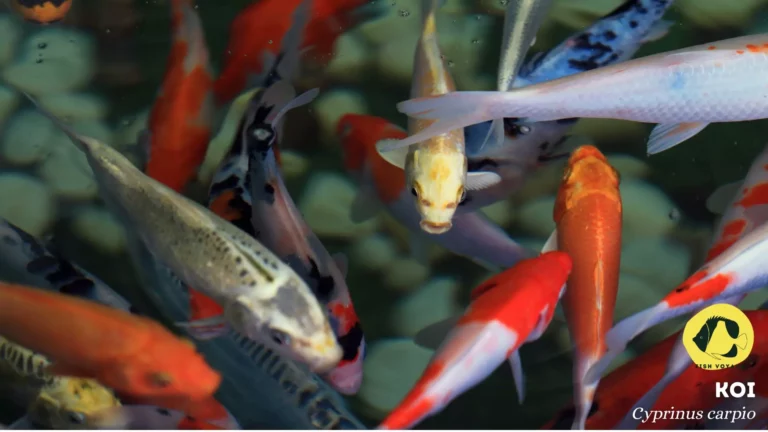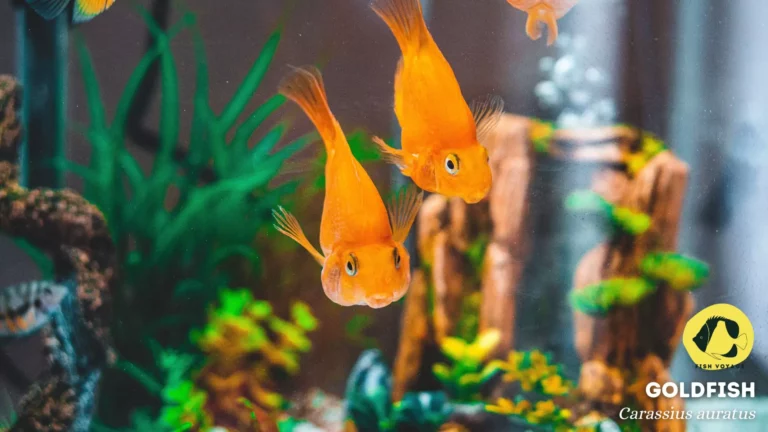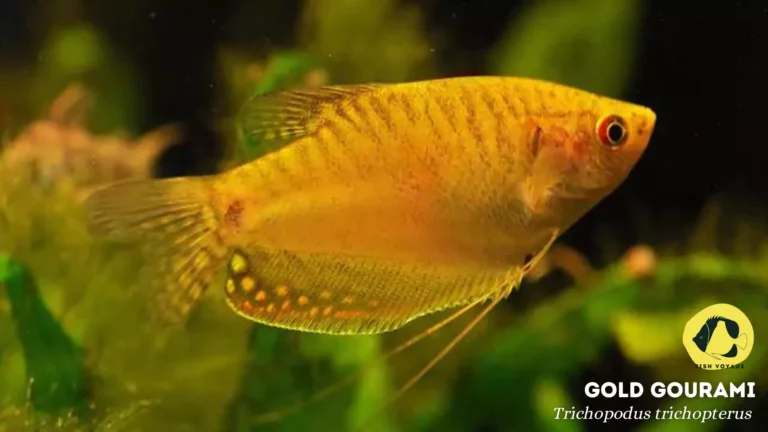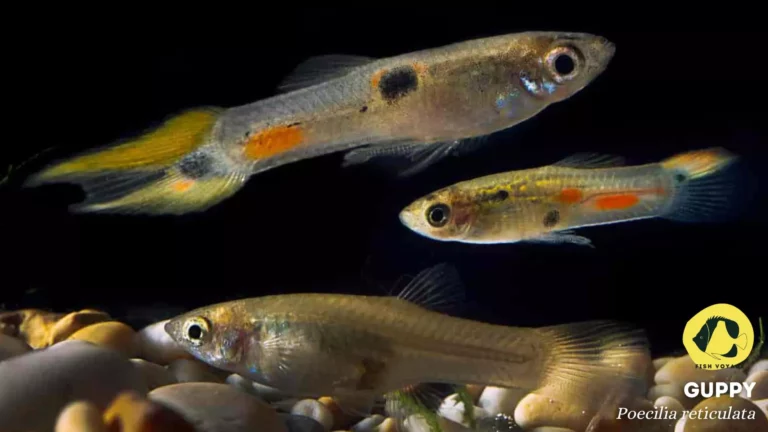What Vegetables Can Angelfish Eat: The Ultimate Guide

In the underwater realm of aquariums, maintaining the well-being of our aquatic companions is paramount. Angelfish, with their majestic appearance and graceful movements, require a meticulously balanced diet to thrive in captivity. While various food options exist, ranging from flakes to live or frozen prey, the emphasis of this guide lies on a component often overlooked: vegetables.
A holistic diet is crucial for the overall health and vibrancy of angelfish, and in this exploration, we delve into the significance of incorporating vegetables into their nutritional regimen. From enhancing coloration to supporting breeding conditions, the benefits are myriad. Join us as we navigate the aquatic pantry and uncover the green treasures that contribute to the optimal care of these celestial creatures.
The Natural Diet of Angelfish: Nourishing Insights for Captive Care
In the wild, angelfish thrive in the intricate ecosystems of freshwater rivers and streams, where their diet consists of a diverse array of foods. From insect larvae to small crustaceans, the natural menu of angelfish is rich in proteins, essential fatty acids, and micronutrients that sustain their health and vibrant colors. Capturing the essence of their native habitat is pivotal in ensuring their well-being in captivity.
In aquariums, it becomes imperative for fish enthusiasts to emulate the natural diet as closely as possible. The inclusion of a variety of foods, mirroring the nutritional complexity of their wild sustenance, is key to replicating the conditions that foster their overall health and vitality. Recognizing and addressing these dietary needs not only contributes to their physical well-being but also enhances their adaptability and resilience in an artificial environment. Join us as we unravel the nutritional tapestry of angelfish, navigating the delicate balance between captivity and the wild, to provide a nourishing and sustainable diet for these celestial aquatic companions.
Benefits of Feeding Vegetables to Angelfish: A Spectrum of Wellness
Within the aquatic haven of aquariums, unlocking the nutritional potential of vegetables is a transformative endeavor for the well-being of angelfish. Beyond the conventional piscine diet, incorporating vegetables presents a spectrum of advantages that reverberate through the very essence of their health.

Holistic Wellness
Vegetables, laden with essential vitamins and minerals, fortify angelfish against nutritional deficiencies. This holistic approach fosters optimal organ function and supports the immune system, ensuring a robust and resilient aquatic companion.
Radiant Color Enhancement
The vibrancy of an angelfish’s colors is not merely aesthetic; it is a reflection of their vitality. Vegetables, enriched with pigments like carotenoids, act as natural color enhancers. Regular consumption contributes to the vivid hues that characterize a healthy and thriving angelfish.
Fostering Breeding Conditions
For breeding pairs, a nutrient-rich diet is paramount. Vegetables play a crucial role in providing the essential building blocks for reproductive health. From promoting egg production to supporting the development of healthy fry, a vegetable-infused diet creates an environment conducive to successful breeding.
Embark with us on a journey into the nutritional landscape of angelfish care, where the incorporation of vegetables transcends mere sustenance. It becomes a cornerstone for the overall wellness, resplendent hues, and reproductive success of these celestial beings, forging a connection between conscientious aquarium stewardship and the flourishing vitality of our aquatic companions.
Safe Vegetables for Angelfish: A Culinary Palette for Aquatic Harmony
Navigating the dietary choices for angelfish unveils a palate of safe and nutritious vegetables that contribute to their overall well-being. Consider incorporating the following vegetables into their menu for a holistic and satisfying nutritional experience.
Spinach (Spinacia oleracea)
Rich in iron, calcium, and vitamins A and C, spinach is a nutritional powerhouse. Its inclusion supports the development of strong bones and vibrant colors in angelfish, making it a leafy green essential for their diet.

Cucumber (Cucumis sativus)
Hydrating and easily digestible, cucumber is a refreshing addition to angelfish diets. Packed with water, it provides essential hydration while offering vitamins and minerals that contribute to overall health and vitality.

Zucchini (Cucurbita pepo)
Low in calories and high in fiber, zucchini is an excellent choice for angelfish. Its nutritional profile includes essential nutrients like potassium, which supports cardiovascular health, and antioxidants that contribute to their overall well-being.
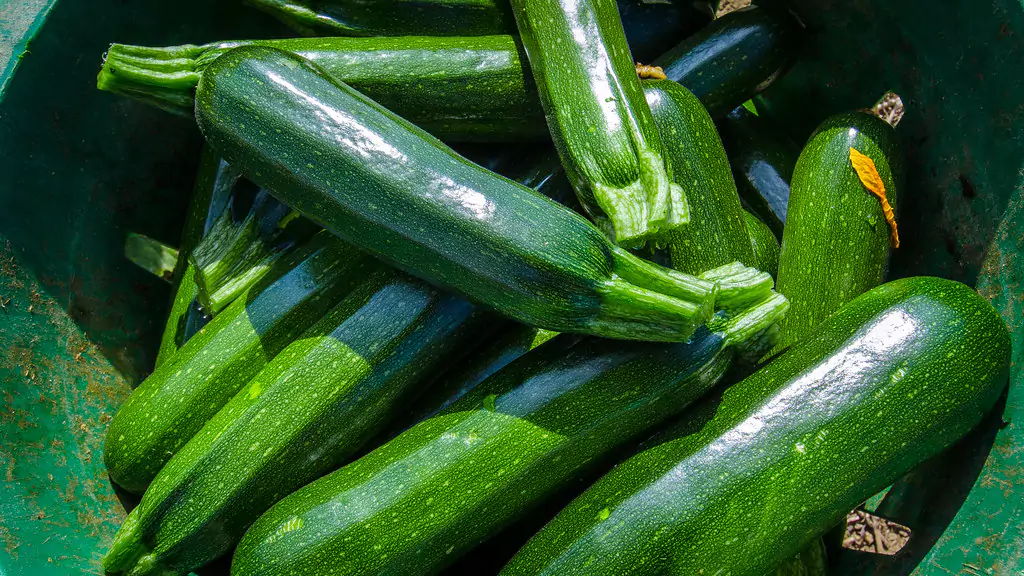
Carrots (Daucus carota)
Carrots bring a vibrant splash of color and a wealth of nutrients to the angelfish diet. Rich in beta-carotene, they support eye health and contribute to the enhancement of natural colors in angelfish.

Broccoli (Brassica oleracea)
Known for its antioxidant properties, broccoli is a valuable addition. It provides a spectrum of vitamins, including vitamin K, which plays a role in blood clotting, promoting the overall health and vitality of angelfish.

By curating a culinary palette that includes these safe vegetables, aquarium enthusiasts can provide a diverse and nutritious diet for their angelfish. Beyond satiating their appetites, these vegetables become a cornerstone for promoting health, color vibrancy, and the overall flourishing vitality of these celestial aquatic companions.
Preparation and Feeding Tips for Angelfish: Crafting a Wholesome Culinary Experience
Ensuring angelfish reap the nutritional benefits of vegetables involves thoughtful preparation and strategic introduction. Follow these guidelines to create a wholesome culinary experience that promotes their health and happiness.
Thorough Cleaning
Begin by meticulously washing vegetables to remove any pesticides or contaminants. Clean, freshwater rinses are essential to guarantee the purity of the vegetables before they become a part of the angelfish diet.
Proper Cutting
Slice vegetables into bite-sized portions to facilitate easy consumption by angelfish. Ensuring that the pieces are of an appropriate size prevents both wastage and potential overfeeding, contributing to a balanced diet.
Blanching Technique
To enhance digestibility, employ the blanching technique. Briefly immerse vegetables in boiling water, followed by an immediate transfer to cold water. This process preserves the nutritional integrity of the vegetables while rendering them more palatable for angelfish.
Gradual Introduction
Introduce vegetables gradually into the angelfish diet. Sudden changes in diet can lead to reluctance or digestive issues. Begin with small portions and observe their response, progressively increasing the quantity as they become accustomed to this new culinary offering.
Variety is Key
Rotate the types of vegetables offered to provide a diverse array of nutrients. This not only caters to their nutritional needs but also prevents dietary monotony, ensuring enthusiastic consumption over time.
Monitoring Consumption
Regularly monitor angelfish behavior and the consumption of vegetables. Adjust the quantity and frequency based on their response. Uneaten portions should be promptly removed to maintain water quality.
Patience and Persistence
Be patient and persistent in introducing vegetables. Some angelfish may take time to adapt to this novel component of their diet. Consistency in offering vegetables will encourage acceptance over time.
By adhering to these preparation and feeding tips, aquarium enthusiasts can transform the introduction of vegetables into a positive and enriching experience for angelfish. Crafting a thoughtful and gradual approach not only ensures their nutritional well-being but also cultivates a culinary journey that resonates with the aquatic harmony of their underwater habitat.
Vegetables to Avoid for Angelfish: Navigating Potential Risks
While a plethora of vegetables can be beneficial for angelfish, it’s equally crucial to be discerning about what goes into their aquatic menu. Certain vegetables, when improperly prepared or introduced, may pose risks to the health of angelfish. Delve into this guide to identify vegetables that warrant caution and understand the potential risks associated with their inclusion.
High Oxalate Greens
Vegetables high in oxalates, such as spinach and Swiss chard, should be offered sparingly. Oxalates, when consumed in excess, can hinder calcium absorption, potentially leading to issues like kidney stones in angelfish.
Cruciferous Vegetables
While broccoli is generally considered safe in moderation, excessive consumption of cruciferous vegetables like kale and cabbage can introduce unwanted gases into the digestive system of angelfish, causing bloating or discomfort.
Starchy Vegetables
Root vegetables like potatoes and sweet potatoes, when not adequately cooked or offered in excess, can introduce starches that are challenging for angelfish to digest, potentially leading to digestive issues.
High-Fiber Vegetables
Fibrous vegetables like celery may pose challenges for angelfish digestion. While fiber is an essential component of a balanced diet, excessive amounts can lead to difficulties in processing and nutrient absorption.
Spicy or Pungent Vegetables
Avoid introducing spicy or pungent vegetables, as the compounds responsible for these flavors may not be well-tolerated by angelfish. Vegetables like onions and garlic can be disruptive to their digestive systems.
High-Fat Vegetables
Avocado, while a nutrient-dense fruit for humans, contains high levels of fats that may not align with the dietary needs of angelfish. Excessive fat intake can lead to health complications, including issues related to their liver function.
Incorporating a discerning approach to vegetable selection ensures the well-being of angelfish. While many vegetables offer nutritional benefits, understanding the potential risks associated with certain varieties allows aquarium enthusiasts to cultivate a diet that harmonizes with the specific needs of these celestial aquatic companions. As stewards of their underwater habitat, our choices in their culinary offerings contribute to the vibrant health and longevity of angelfish in captivity.
How to Observe if Angelfish Like the Vegetables: Decoding Aquatic Appetites
Unraveling the preferences of angelfish towards vegetable offerings involves keen observation of their nuanced behaviors. As conscientious stewards of aquariums, it is essential to decipher the signals these celestial beings convey, ensuring that their dietary needs are not only met but celebrated. Engage in this insightful guide to discern whether your angelfish are embracing or rejecting the green additions to their menu.
Initial Hesitancy
Upon introducing vegetables, it’s not uncommon for angelfish to exhibit initial hesitation. Watch for subtle exploration, where they may investigate the new elements in their environment. This cautious approach is a natural part of their adaptive process.
Tentative Nibbling
Observing tentative nibbling is a positive indicator. Angelfish may delicately sample the offered vegetables, gauging both texture and taste. This gentle exploration signifies a willingness to incorporate new elements into their diet.
Energetic Feeding Behavior
An enthusiastic and energetic feeding response is a clear sign of acceptance. Look for increased activity, with angelfish actively engaging with the vegetables. This behavior reflects not only acceptance but also an appreciation for the nutritional value of the offerings.
Aggressive Defending of Food
In communal tanks, observe whether angelfish display territorial behavior around the vegetable source. Aggressive defending of the food indicates a strong preference, and adjustments may be needed to ensure all fish receive a fair share of the nutritious offerings.
Frequent Refusal or Spit Outs
Frequent refusal or spitting out of vegetables may indicate aversion. In such instances, consider adjusting the type or preparation of the vegetables. Experimenting with different varieties and sizes can help identify the preferences of individual angelfish.
Gradual Adjustment Period
Recognize that angelfish may take time to adapt to a new diet. A gradual adjustment period allows them to acclimate, and persistence in offering vegetables is key. Consistency and patience are fundamental in cultivating positive dietary habits.
By attuning yourself to the behavioral nuances of angelfish, you embark on a journey of understanding and responsiveness. This symbiotic relationship between observer and observed enriches the aquarium experience, ensuring that the culinary preferences of these celestial aquatic companions are not only acknowledged but met with tailored care and consideration.
Conclusion: Nourishing the Elegance of Angelfish Through Thoughtful Nutrition
In the aquatic tapestry of angelfish care, the exploration of their dietary preferences unveils a nuanced journey. From the verdant allure of safe vegetables to the subtle dance of observational cues, this guide has delved into the intricacies of ensuring a wholesome and fulfilling culinary experience for these celestial beings.
In reiteration, the importance of a diverse and balanced diet for angelfish cannot be overstated. Beyond the conventional fare, the inclusion of vegetables emerges as a cornerstone for their holistic wellness. From supporting vibrant coloration to fostering optimal breeding conditions, the nutritional advantages are vast. It is through this conscientious approach to their dietary needs that we, as aquarium enthusiasts, contribute to the flourishing vitality and longevity of our angelfish companions.
As stewards of their underwater habitat, our commitment extends beyond mere sustenance. It transcends into the realm of crafting a diet that harmonizes with the intricacies of their natural behavior and nutritional requirements. Let this guide stand as a testament to the enriching journey of nurturing these elegant beings, fostering a connection that extends from the aquatic depths to the hearts of those who take joy in their care. May the vibrant hues and thriving vitality of your angelfish reflect the meticulous attention bestowed upon their culinary well-being.
Additional Resources
In the pursuit of comprehensive angelfish care, a wealth of resources awaits enthusiasts eager to delve deeper into the realms of aquatic nutrition and well-being. Explore the following curated selection of articles, recommended products, and resources to further enhance your understanding and stewardship.
Aquarium Advice: The angelfish section of the Aquarium Advice Forum provides a dedicated space for discussions related to angelfish care, including their dietary needs. Engage with a community of experienced aquarists, share your experiences, and seek valuable advice on the best vegetables for your angelfish.
Angelfish: Understanding and Keeping Angelfish by David A. Lass: A comprehensive guide aimed at aquarists and fish enthusiasts interested in the care and keeping of angelfish. Drawing on the author’s expertise in angelfish husbandry, the book may cover a spectrum of topics related to the proper maintenance of these graceful and popular aquarium fish.
Frequently Asked Questions (FAQs)
1. What vegetables are safe for angelfish?
Safe vegetables for angelfish include spinach, cucumber, zucchini, carrots, and broccoli. These options provide essential nutrients without compromising their well-being.
2. How should I prepare vegetables for angelfish consumption?
Vegetables should be thoroughly cleaned, cut into bite-sized portions, and blanched for enhanced digestibility. This careful preparation ensures that angelfish can reap the nutritional benefits of the vegetables.
3. Can angelfish eat fruits along with vegetables?
While angelfish primarily benefit from vegetables, some fruits like melons and berries can be offered in moderation. However, it’s crucial to avoid high-sugar fruits and maintain a balanced diet.
4. Are there vegetables that angelfish should avoid?
Yes, certain vegetables high in oxalates, cruciferous vegetables, starchy vegetables, and those with high fat content should be offered sparingly to prevent potential health issues.
5. How can I tell if my angelfish likes the vegetables I offer?
Observe their behavior; initial hesitation is normal, but enthusiastic nibbling or energetic feeding indicates acceptance. If angelfish frequently refuse or spit out vegetables, adjustments in type or preparation may be needed.

